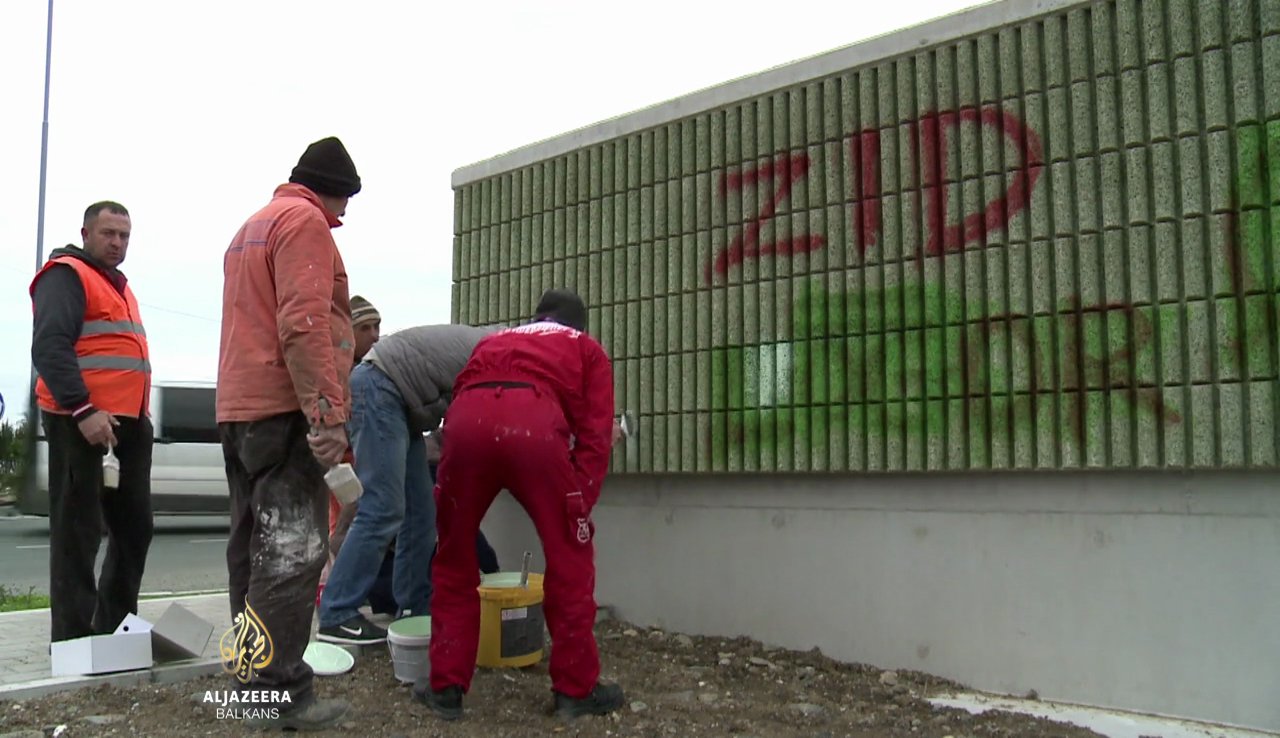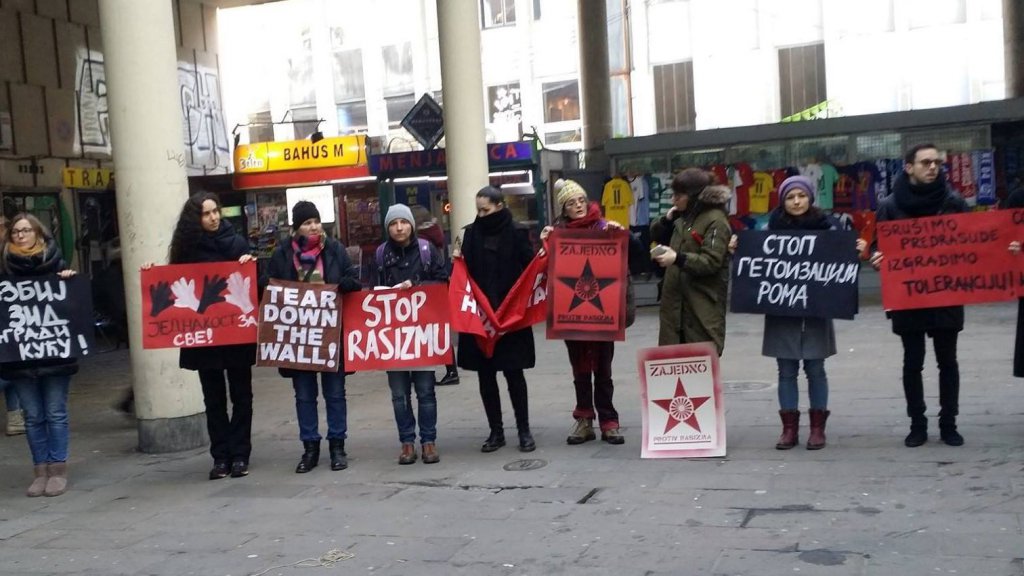Behind the wall – Ghettoization of Roma people in Krusevac, Serbia
22 December 2016
By Benjamin Ignac
While Donald Trump and his supporters spent much of 2016 chanting “Build the wall” to keep the Mexicans out of the US, the Serbian government has already gone ahead and built their version of the wall which now separates the Roma community from the surrounding population in Krusevac, Serbia.

Photo credit: Aljazeera Balkan
Noise barrier or ethnic barrier?
The 120m long and 2m high wall was erected in mid-November 2016 and now excludes over 2000 Roma people who live in the settlement Marko Orlovic, which until now was part of the city of Krusevac. The company who built this wall, Roads of Serbia, claims it is a “noise barrier” which is supposed to protect the citizens from noise and traffic. However, the wall only shields the Roma settlement, and does not extend to other stretches of this allegedly “noisy” road. Furthermore, if its purpose was to block the noise, they could have used a transparent wall which could have been cheaper and more subtle than this Berlinesque eyesore. All this implies that it was more than just a “noise barrier”. No matter how much the responsible parties tried to convince the public that the motives were to benefit the Roma community, at this point it is pretty obvious that this was an act of discrimination and segregation based on ethnicity. Even the Serbian neighbours near Marko Orlovic admit that this wall was built to conceal the “unpleasant” views, noise and smells from the Roma community.
Ghettoization 101
The construction of the wall has quickly drawn negative attention to Serbia and the city of Krusevac as it goes against every national and European effort to “integrate” Roma people. The Roma inhabitants of Krusevac, just as in other parts of Europe, are already marginalized, discriminated against and segregated. An attempt to spatially segregate an ethnic group in such a visible way is counterproductive and only widens the gap between the two groups. The symbolic message that the government is sending is that problems with the Roma community can be solved by just barricading them or making them less visible. This solution is inhumane and unsustainable. Spatial segregation isolates a community into ethnic ghettos and makes it virtually impossible for social or economic integration. The wall doesn’t only damage the public perception about Roma people but also puts the citizens of Marko Orlovic in a disadvantageous position. Because of the location of the wall, public services such as ambulances, firefighters, and sanitation services now have a very limited access to this specific part of town.
The reaction of the citizens of Marko Orlovic ranges from acceptance to outrage. The Romani people who have decided to embrace this new reality are probably fed up with the stares and glares of the surrounding citizens and perhaps see the wall as a shield from the haters. In many cases they believe that not much can be done to fix it. This sad barricaded reality that they inhabit is an explicit proof of how low the Serbian society thinks of them. However, there is also a growing number of people who express their discontent with this situation. Graffiti with the words ‘Zid Logor’ – ‘Camp Wall’, emerged on the wall soon after it was raised. According to a Roma activist who has spoken to some of the Roma people behind the wall, they see it as a message from the government that says “you are not welcome here”. She also stated how this has a negative effect on the Roma children who now feel even more scared and isolated from the rest of Krusevac. Roma pupils in school get hazed that they come from “another planet, somewhere behind the wall”. The wall has also gathered attention and public outrage from over 20 local and regional Roma rights NGOs that are fighting to take down this monument to segregation. In early December, protests were organized in both Krusevac and Belgrade calling for the demolition of the wall. The local government in Krusevac and Roads of Serbia are currently busy shifting the blame between each other, which doesn’t solve the real problem for which they should both be held accountable.

Photo credit: Regional Centre for Minorities
The wall in Krusevac is unfortunately one of many walls that segregate Roma in Europe. It seems that Serbia is following the trend of countries like Slovakia, Czech Republic, Romania, Bulgaria, Italy and France which, when it comes to Roma, have repudiated fundamental values that unite Europe: democracy, human rights and social inclusion. We cannot let this become a common practice in Europe. Let’s take down the walls and instead build tolerance and integration!




